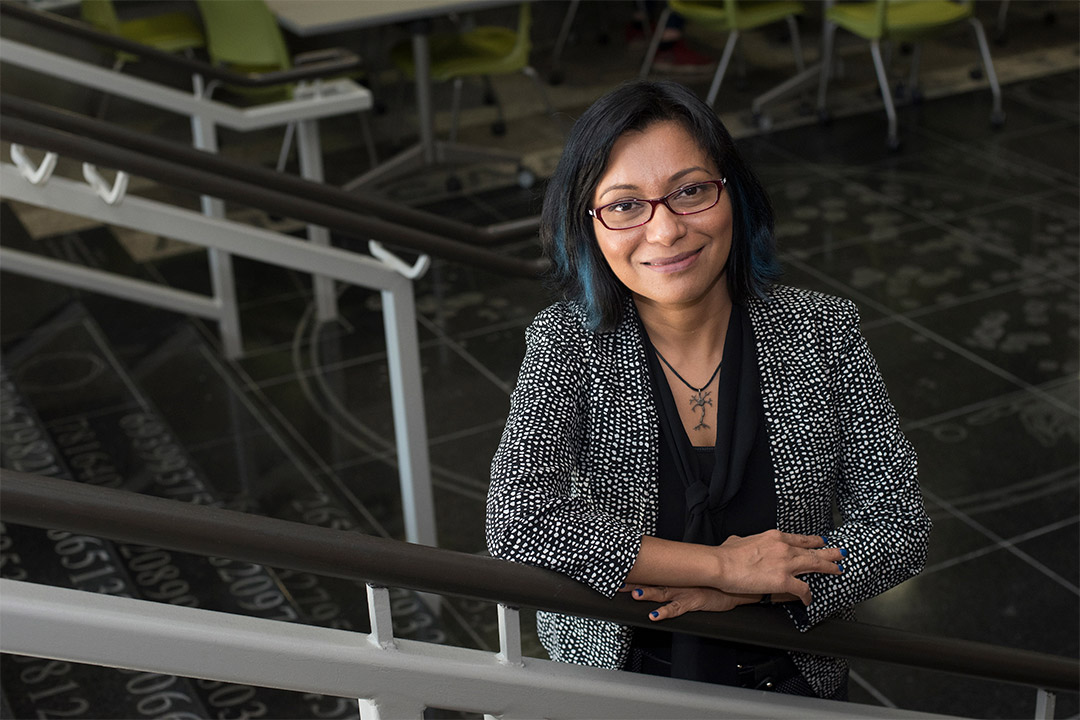RIT researcher receives NSF grant to help build a synthetic neuron and neural network
A. Sue Weisler
RIT Associate Professor Moumita Das is teaming up with researchers from six other universities to build synthetic neurons and a programmable network of such neurons in an effort to better understand the rules of life.
Researchers from Rochester Institute of Technology and six other universities are teaming up to build synthetic neurons and a programmable network of such neurons in an effort to better understand the rules of life. The project is part of the National Science Foundation’s “Big Ideas” initiative— 10 bold, long-term research and process ideas that identify areas for future investment at the frontiers of science and engineering.
“The ultimate goals are understanding the fundamental rules of life— both the physical rules as well as biological rules,” said Moumita Das, an associate professor in RIT’s School of Physics and Astronomy. “It’s often very difficult to differentiate between physics and biology because nature doesn’t really care about boundaries between disciplines. So, we’re asking, what are the mechanisms that make life happen? Life is a complex emergent phenomenon, but we don’t really understand how it emerges. This is taking some steps to understand it.”
Das received a $570,000 grant from NSF to lead the modeling efforts of the project. She will work alongside experimentalists and bioethicists to build synthetic analogues of neurons, the basic units of our nervous system, from non-living material to discover what it is that living cells need to do to function. Das said the project, among the first major, U.S.-government-backed efforts targeting construction of synthetic neurons, is especially ambitious because of the complex nature of neurons.
“The neuron is one of the more complicated cells in the human body,” said Das. “Compared to other cells they have a very interesting, branched morphology, or structure. One of the things we would like to know is how can you map the function of a neuron to its morphology. We can’t really change the structure of a biological neuron, but we can construct synthetic neurons to have different morphologies and then we can see how it affects their function.”
The team will have to build more than just a single synthetic cell to understand how they work. Since neurons are designed to transmit information to one another through chemical and electrical signals, the team will program a network of synthetic neurons to study how they work holistically to perform basic functions.
Das has enlisted the assistance of several RIT students to help with modeling for the project. Peter Hart, a third-year student from Manlius, N.Y. double majoring in physics and applied mathematics, is looking at how the structure of the neuron impacts the way signals propagate. Gabriel von Kessel, a fourth-year physics student from Sarasota, Fla., is focused on how neurons connect together to form logical operations. Das said she expects to bring additional graduate students and postdoctoral researchers into the project over the next year as well.
Das is collaborating with her fellow principal investigators from University of Michigan; Stanford University; Johns Hopkins University; Purdue University; University of California, Santa Barbara; and Baylor College of Medicine. Work kicked off in September and is estimated to be complete in 2023.



